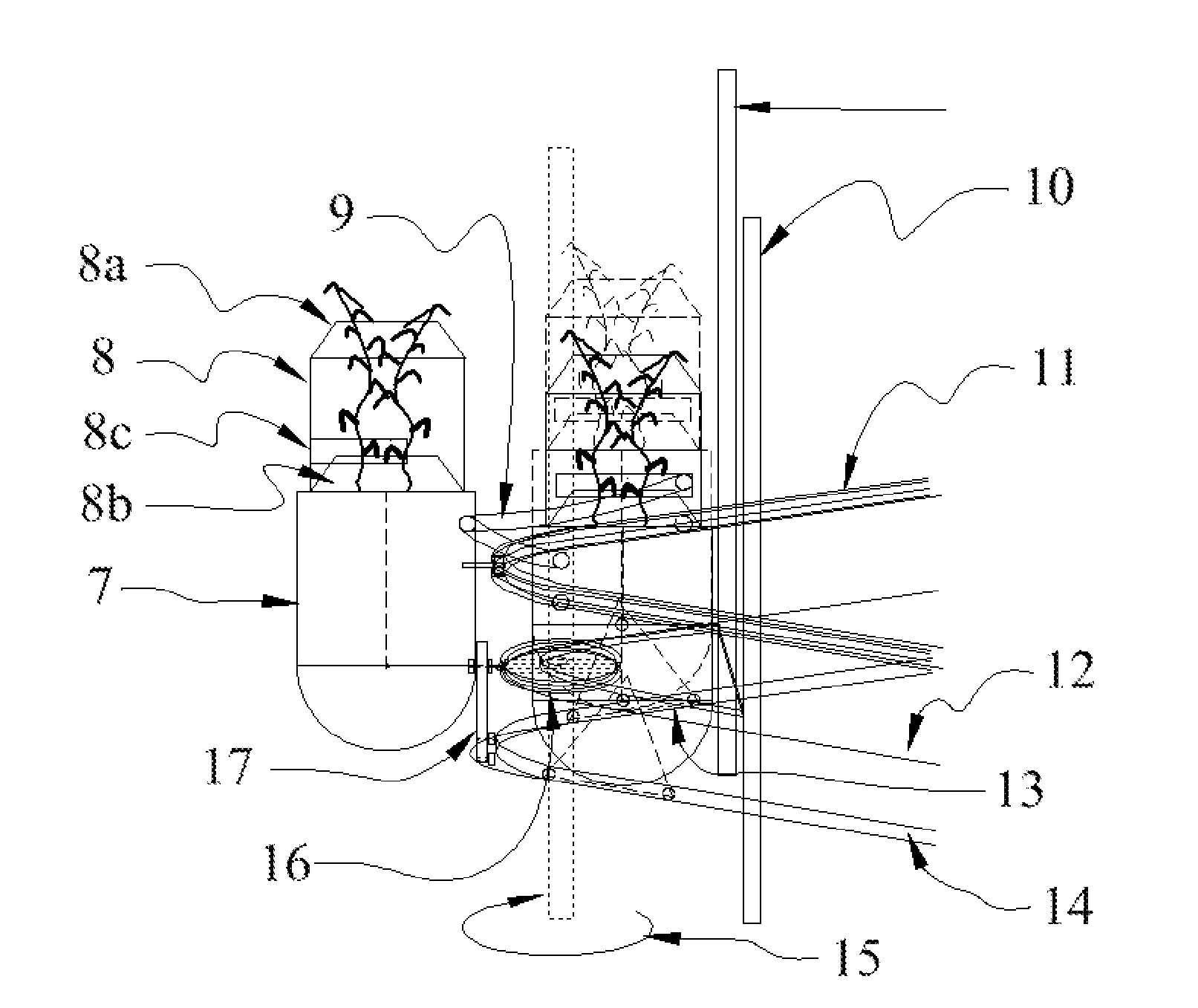Modular Vertical Farm Cell
a vertical farm and module technology, applied in the field of modules, can solve the problems of not addressing the optimal characteristics claimed, failing to address the vertical arrangement for growing plants and crops in a continuous fashion, and failing to produce a continuous automatable system
- Summary
- Abstract
- Description
- Claims
- Application Information
AI Technical Summary
Benefits of technology
Problems solved by technology
Method used
Image
Examples
Embodiment Construction
[0013]At the bottom of the conveyance at position 1, one fully mature plant at a time is harvested. Since perennial grasses and other crops can in conventional cultivation persist through many growing seasons, the harvested plant's potted seed piece continues to re-ascend the conveyor as it sprouts anew. When a plant becomes aged, a new pot with a fresh seedling is placed in the sequence as the old one is removed. The example in FIG. 1 shows the production of a sugarcane cultivar which has an optimal growing cycle of 182 to 183 days. The example shows 182 plants in progressive stages of maturity. The conveyance tower in the example is about 45 feet high, or about 4.5 times the mean height (ten feet) of one mature plant. Some plant varieties may tolerate higher or lower total column-heights. The figure shows plants traversing in the foreground in solid-lines and plants traversing in the background in dashed-lines. In this way the concept is depicted as two layers deep, and occupying ...
PUM
 Login to View More
Login to View More Abstract
Description
Claims
Application Information
 Login to View More
Login to View More - R&D
- Intellectual Property
- Life Sciences
- Materials
- Tech Scout
- Unparalleled Data Quality
- Higher Quality Content
- 60% Fewer Hallucinations
Browse by: Latest US Patents, China's latest patents, Technical Efficacy Thesaurus, Application Domain, Technology Topic, Popular Technical Reports.
© 2025 PatSnap. All rights reserved.Legal|Privacy policy|Modern Slavery Act Transparency Statement|Sitemap|About US| Contact US: help@patsnap.com



